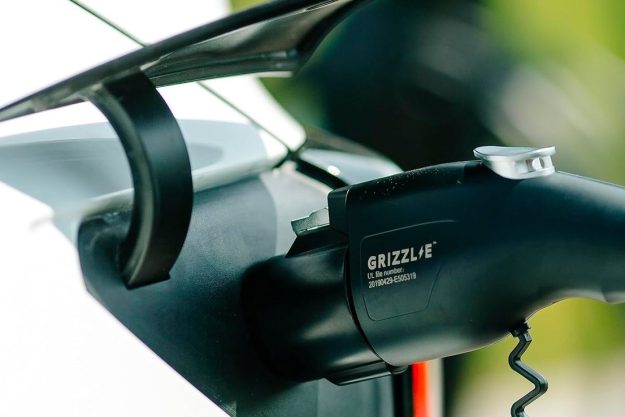It’s still unclear how the Nissan GT-R LM NISMO will fare at the 24 Hours of Le Mans next month, but it’s safe to say the front-engined, front-wheel drive hybrid has already one the prize for most unusual design.
Nissan’s had plenty to say about the car’s front-wheel drive layout — which is the opposite of what car-design orthodoxy considers optimal — but now it has a few more technical tidbits to share as well.
A hood the size of an aircraft carrier’s flight deck leaves plenty of room for a 3.0-liter twin-turbocharged V6. As previously reported, this engine will work in concert with an energy-recover system (ERS) and electric motor.
Instead of the batteries used in production hybrid cars, the ERS consists of a mechanical flywheel mounted ahead and beneath the driver’s feet. A five-speed sequential gearbox is used to manage power from the internal-combustion side of the powertrain.
All of the mechanical bits are covered in carbon-composite body panels, helping the GT-R LM NISMO achieve a curb weight of just 1,918 pounds in race trim.
The bodywork was also designed so that air can flow through it, using two massive “tunnels” on either side of the cockpit. That was the reason for putting the engine in the front, rather than in the middle as in rival designs from Audi, Porsche, and Toyota.
Incidentally, the GT-R LM NISMO is also right-hand drive. Nissan says this is to make exiting the car easier during pit stops, but it’s also fitting for a car from a Japanese manufacturer.
While a front-engined layout was always part of the plan, some reports claim Nissan was looking at an all-wheel drive system for the GT-R LM NISMO, but scrapped the idea due to weight and timing issues.
Front-wheel drive has a reputation as the least-ideal setup for performance cars, but Nissan believes it can still make it work. To that end, it equipped the GT-R LM NISMO with staggered tires: 18″×13″ in front, and 16″×9″ in the back.
Whether on the road or track, it’s always exciting to see a carmaker try something different. Nissan has gone above and beyond in that regard — but whether difference translates into success on the track remains to be seen.


